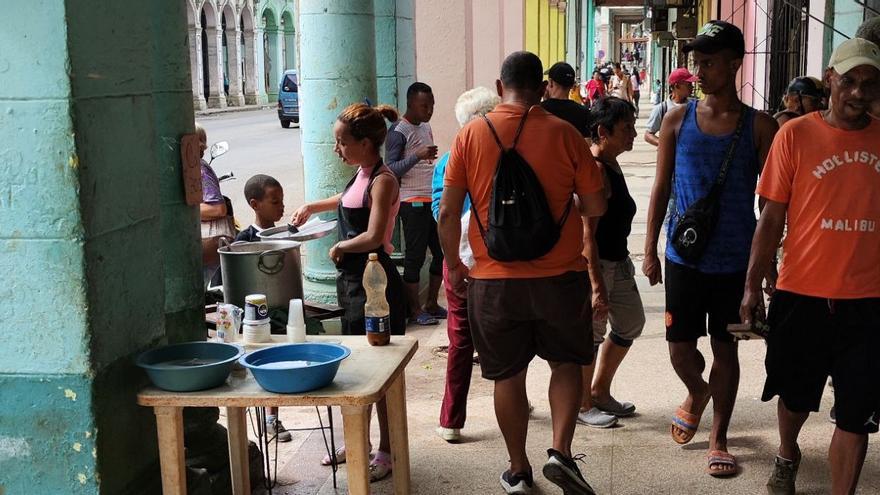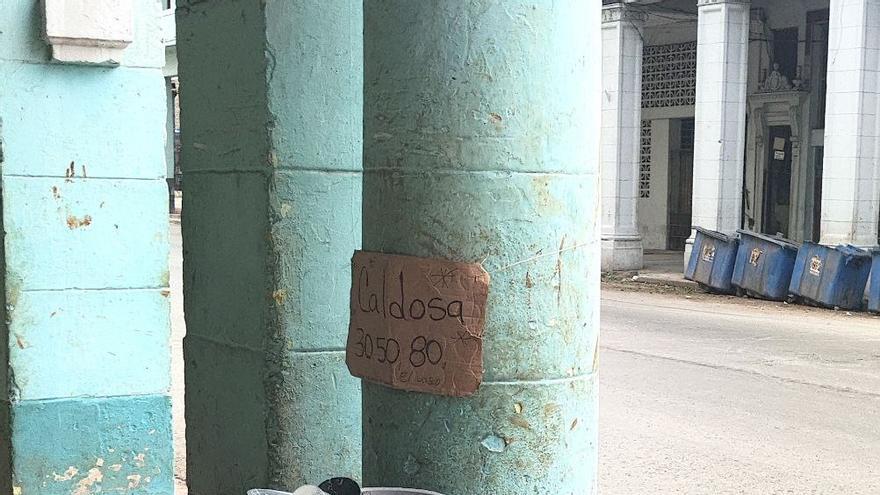
![]() 14ymedio, Juan Diego Rodríguez, Havana, January 12, 2024 — The woman quickened her pace until she reached the corner of Reina and Manrique streets, in Centro Habana. In front of a table with flimsy legs with a pot on top, she ordered “a broth for 30 pesos.” The vendor served her a pale liquid in which small pieces of something floated. The lady drank everything in one long drink and crossed the street, avoiding the puddle of sewage water right in front of the improvised food service point.
14ymedio, Juan Diego Rodríguez, Havana, January 12, 2024 — The woman quickened her pace until she reached the corner of Reina and Manrique streets, in Centro Habana. In front of a table with flimsy legs with a pot on top, she ordered “a broth for 30 pesos.” The vendor served her a pale liquid in which small pieces of something floated. The lady drank everything in one long drink and crossed the street, avoiding the puddle of sewage water right in front of the improvised food service point.
The ethnologist and jurist Fernando Ortiz defined Cuban culture as an ajiaco — a rich chicken stew made with three types of potatoes — because it mixed African, Spanish and indigenous, plus countless customs of those who migrated to the Island from different latitudes. Dense and made from rich meats and vegetables, this Creole dish could “raise a dead man,” as described by the elders, but its preparation is very difficult today, with its ingredients missing from the market platforms or extremely expensive.

Instead, it is more common to find its poor cousin: broth. A lot of water, no corn and, instead of cassava or malanga, they barely add bananas or a few portions of sweet potato, which are cheaper and easier to find. The main menu of the official celebrations every September 27, the eve of the anniversary of the Committees for the Defense of the Revolution, this is identified with the bungling and crisis that characterize the Cuban system, which is why it has become the signature recipe of Castroism.
However, there are levels and levels of broth. The one that was sold this Thursday in a doorway on Reina Street, just outside a small agricultural market, had gone down a few more steps in quality and respect for the consumer. Without any aroma coming out of the pot, with the stench of sewage accumulated a few centimeters away and made from very few components, the recipe had degenerated until it looked like warm water with shells.
Today’s Cuba is more like a broth than an ajiaco. Gripped by the exodus, the lack of culinary references and the economic disaster, its formula has become as impoverished as the reality. Better to swallow it quickly and holding your breath, so that it fills the stomach but does not harm the palate, as did the woman who today, in Central Havana, asked for the smallest serving because she did not dare to take the largest glass, at a price of 80 pesos.
____________
COLLABORATE WITH OUR WORK: The 14ymedio team is committed to practicing serious journalism that reflects Cuba’s reality in all its depth. Thank you for joining us on this long journey. We invite you to continue supporting us by becoming a member of 14ymedio now. Together we can continue transforming journalism in Cuba.
